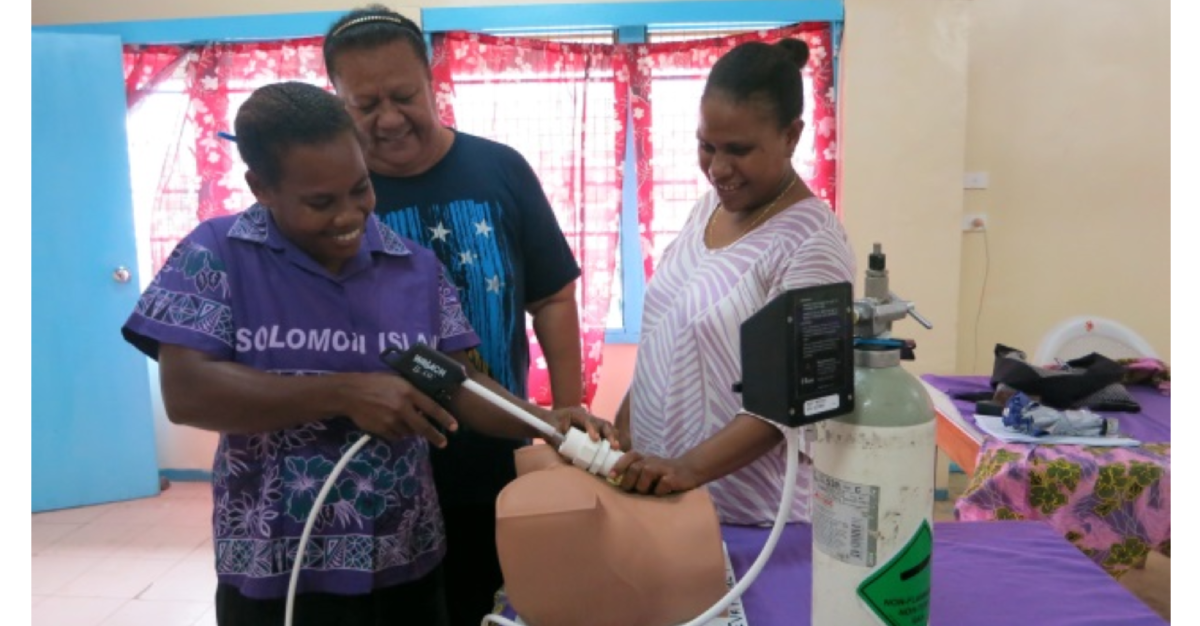The Solomon Islands has been ranked 56th in the world for its cervical cancer crude incidence rate.
That’s according to the latest 2025 World Population Review global report on cervical cancer statistics.
Based on data from 2020, the country recorded a crude incidence rate of 19.3 cases per 100,000 women, placing it among countries with moderately high rates of cervical cancer compared to the global average.
In the Pacific region, the Solomon Islands ranks higher than many developed nations but lower than neighboring Papua New Guinea, which has a significantly higher incidence rate of 24.6 per 100,000.
The data shows that Solomon Islands’ age-standardized incidence rate is 25.4, with a cumulative risk of 2.5% for women aged 0-74 years.
In 2019, cervical cancer accounted for 41 deaths in the country, with a mortality-to-incidence ratio of 0.62.
Eswatini topped the list globally with the highest rate of cervical cancer at 57.8 per 100,000, followed by Lesotho (49.9), Malawi (42.8), Zimbabwe (39.2), and Comoros (38.8).
These countries face some of the most severe burdens of the disease, often due to limited access to screening, vaccination, and treatment.
Health professionals say the ranking reflects ongoing health challenges in the Solomon Islands, including limited access to regular cervical screening, low awareness about HPV (human papillomavirus)—the leading cause of cervical cancer—and inadequate vaccine coverage.
According to the Ministry of Health and Medical Services (MHMS) recently Permanent Secretary (PS) Mrs Pauline McNeil emphasized that Cervical cancer is a key public health threat and a concern for Solomon Islands.
“Cervical cancer is currently the most common cancer among women in the Solomon Islands, accounting for 18.1% of all new cancer diagnoses in females. With an incidence rate of 19.3 cases per 100,000 women, the disease disproportionately affects young women in their most productive years of life,” she said.
Despite being highly preventable, many Solomon Islands women continue to lose their lives unnecessarily due to the lack of early detection and frequent late-stage diagnoses.
“The incidence and mortality rates of cervical cancer in Solomon Islands remain among the highest globally.
“This is largely the result of systemic barriers to early screening and access to timely treatment,” PS McNeil added.
“To combat this public health challenge, the Solomon Islands Government will, over the next five years, receive technical and scientific assistance from Australian partners and other international stakeholders.
“This support will focus on rolling out a nationwide cervical screening and treatment program based on human papillomavirus (HPV) testing, aiming to significantly reduce the burden of cervical cancer across the country.
“Support will be provided through the Australian funded Elimination Partnership for Cervical Cancer in the Indo-Pacific (EPICC) Program and the Advancing Cervical Cancer Elimination in the Pacific program (AdvanCE) supported by the Swire Group.
“These programs will support the Solomon Islands to screen over 41,000 age-eligible women for HPV,” she told the local media earlier this year.
Meanwhile, stakeholders are calling for strengthened investment in women’s health, particularly in rural and remote areas like the Western Province, where access to Pap smears and HPV testing is limited.
As the Solomon Islands continue to address public health concerns, cervical cancer remains a critical area needing national attention to reduce the burden of disease on women and families.
By ULUTAH GINA
Solomon Star, Gizo





